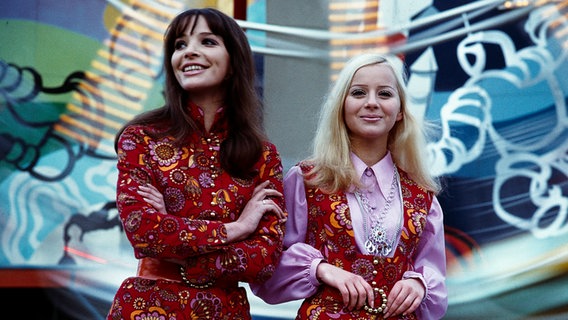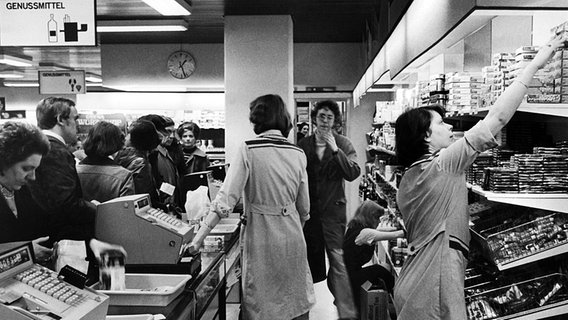Fashion in the GDR: when jeans were still called studded trousers | NDR.de – history
Status: 03.08.2021 4:20 p.m.
Jeans were once an expression of freedom and rebellion. The GDR youth was also very hot on their pants. But they weren’t accepted politically for a long time and were hard to come by.
For decades jeans have been less of a piece of clothing than an expression of an attitude towards life – and it is not for nothing that Ulrich Plenzdorf’s cult novel “The New Sorrows of Young W” says: “Jeans are an attitude and not pants!” Actually a typical symbol of the values of the West, Trousers made from the robust denim cotton are also enjoying increasing popularity among young people in the GDR – initially viewed with suspicion by the SED Politburo.
The riveted trousers – as jeans were called in GDR times on the other side of the Wall – show the changing everyday experiences of people as well as the changing cultural policy and finally also the development of fashion in a country that is largely isolated from the rest of the world.
additional Information
Threat of punishment for jeans in the schoolyard
Wearing the coveted textile for young people in the socialist part is not quite as unproblematic as it is for their contemporaries in the western part of Germany. The pop singer Chris Doerk remembers a few years ago on NDR about one of her first carrying experiences in the early 1960s: “We had to go to the roll call in the school yard. I was standing there unsuspectingly in blue jeans when the director called me up front and said embarrassed me in front of everyone: ‘If I see you at school with jeans again, there will be a hefty punishment!’ “
When Frank Schöbel was allowed to wear jeans on GDR television
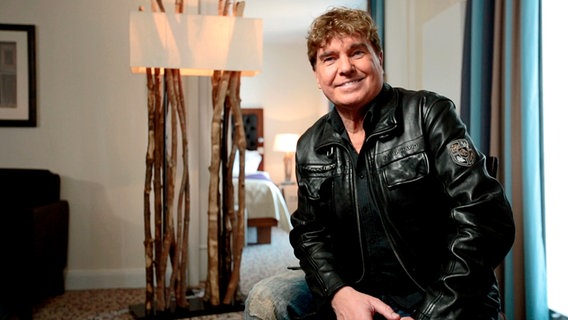
Pop singer Frank Schöbel was the first to wear jeans on GDR television.
While jeans are still a reason for a clubhouse ban for the early generation (“entry only in well-groomed clothes”), from the early 1980s they became tolerated and later even popular with the Free German Youth (FDJ). In 1980, the movie “And next year at Balaton” was shown in the GDR cinemas – a film in which a group of jeans-wearing, long-haired youths hitchhiked through Hungary. At the latest when pop singer Frank Schöbel was allowed to appear on GDR television in jeans, the trousers developed by the emigrant Levi Strauss from Franconia for the American gold diggers in the middle of the 19th century had finally become socially acceptable in the workers ‘and peasants’ state.
“Wisent” vs. “Wrangler”
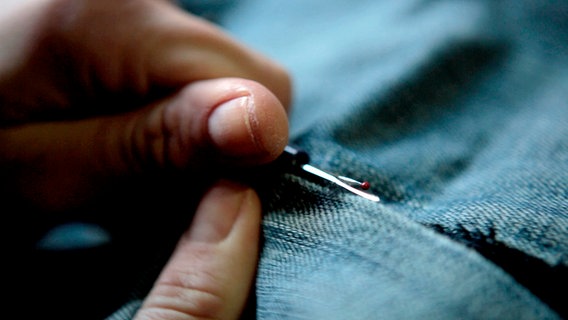
For many GDR citizens, unraveling and sewing an original pair of jeans was the only way to get a “real” pair of jeans.
The new attitude of the officials to jeans is also reflected economically: state-owned companies such as the Kombinat Jugendmode, “Shanty” Jugendmode and the “Güstrower Kleidwerke” are now producing the trousers with the rivets. But models such as “Wisent”, “Goldfuchs” or “Boxer” have a decisive disadvantage: the local products do not match the nimbus of legendary western brands such as “Levi’s” or “Wrangler”, as jeans dealer Gunnar Böhm from Rostock does in the NDR documentary “When jeans were still called rivet pants”.
Böhm experienced pretty much everything that had to do with jeans from East or West in the late GDR. At that time he moved with his mother through the stores of the “Güstrower Kleidwerke”, the “Jugendmode” branches up to the “Exquisit”. Little Gunnar had chosen a “boxer” for himself – the only Eastern jeans that were acceptable to him, “because the pockets were a little deeper, that looked cool!”
“Vietnamese” Levi’s from Rostock-Lichtenhagen
But the western jeans put even the “boxers” in the shade. Böhm had to beg for months until his relatives from the West finally sent him a pair of real jeans. However, “only” a “Jingler’s” from C&A. And it’s too big too. “An ox tour through Rostock tailoring shops began. In the end, the pants were totally messed up. The tailor had taken so much fabric out of the buttocks that the pockets touched. That really looked anything but cool!”, He says looking back. But Gunnar does not despair: “I went to the Vietnamese who were sewing ‘Levi’s 501’ in their apartments in Lichtenhagen. But I had to supply them with a suitable real ‘501’ as a template. I bought it from a classmate for a day off. Then the Vietnamese were able to draw the pattern. ” Shortly afterwards, Gunnar Böhm has his real jeans – at least an almost real one.
Go East: C&A produces in Rostock
Gunnar Böhm remembers one experience from 1985 very clearly – a real shock: “In the tenth grade we went to the Rostock ‘Shanty factory’ as part of a factory tour. There our eyes overflowed. There they were all the Western clothes that were sewn for C&A. We had never known anything about it, but the factory was in the middle of the city. They produced on the assembly line for the West. We were stunned. “
People in jeans with tears of joy on the wall
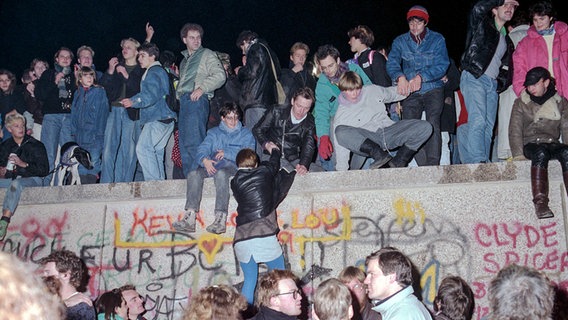
Fall of the Berlin Wall in Blue Jeans: The pictures of people in jeans went around the world in 1989.
It will be another four years before the wall falls – and both the GDR and Ost-Jeans are history. The state-owned textile companies have long ceased to exist. But at least in the memory of the time of the Reunification, the old models live on: in the pictures of people who in November 1989 in jeans or even in denim suits – often “moonwashed” – stand on the Berlin Wall and cry with happiness.
additional Information


